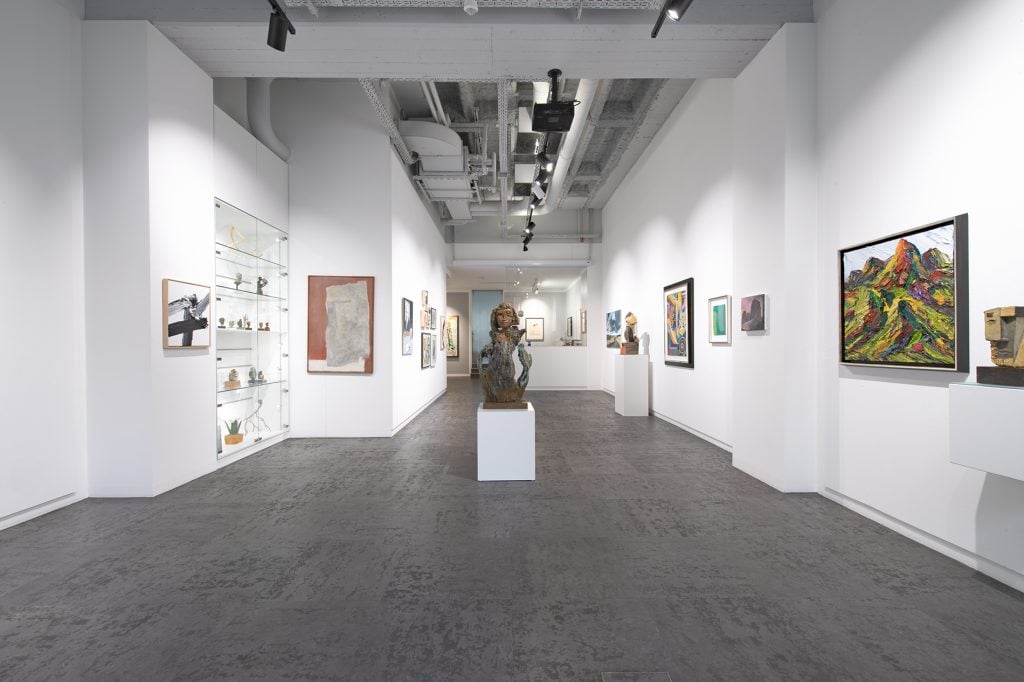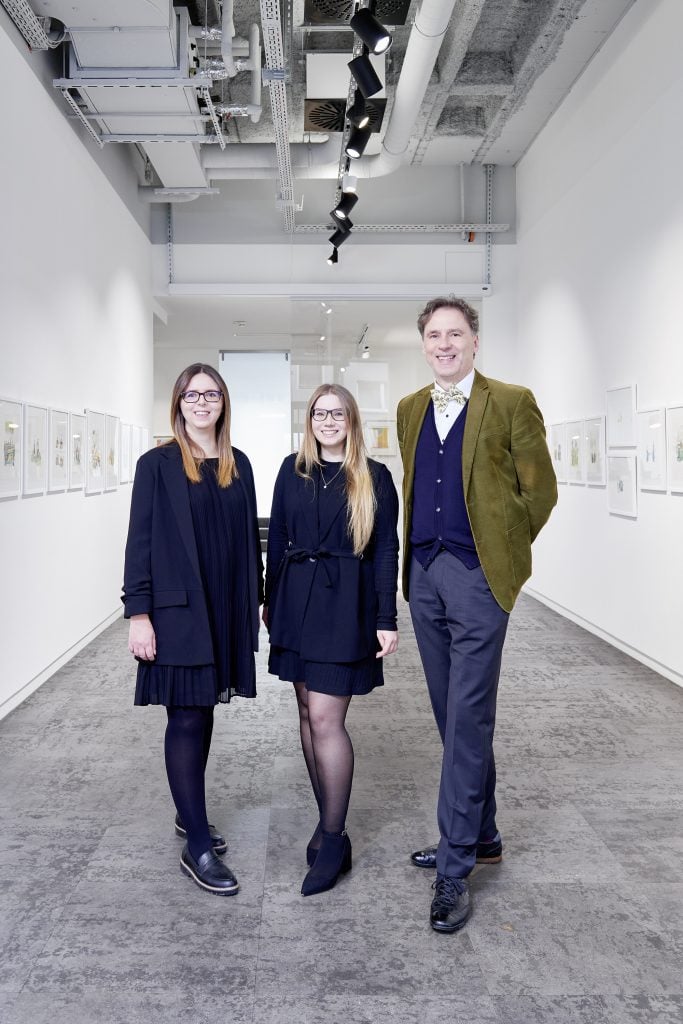
30 Oct Klaus D. Bode on Cultivating a Street Table into International Enterprise
Source Credit: Content and images from Artnet News. Read the original article - https://news.artnet.com/art-world/bode-galerie-anniversary-2560953
Marking 40 years since its founding, Bode Galerie is staging its “40th Anniversary Exhibition” at its Nuremburg, Germany, location. On view through November 9 .2024, the show features work by more than a dozen gallery artists from over the years, including Kim Mun-Ho, Imi Knoebel, and Markus Lüpertz, just to name a few.
Despite the gallery’s humble beginnings, at a table within a subway passageway, Klaus D. Bode’s eponymous venture has grown to be an international endeavor, with a location in Nuremberg as well as Daegu, South Korea. Bode was also a founding member of the Federal Association of German Art Publishers, and a member of the German Cultural Council from 2008 to 2009, making him a singularly influential figure within the German art scene. Driven by a focus on timeless art beyond just the contemporary trends, Bode Galerie is a bastion of cross-cultural dialogue and discovery.
We reached out to Bode to learn more about the history and evolution of the gallery, as well as what he sees the role of his family being in bringing Bode Galerie and its legacy into the future.

Installation view of “40th Anniversary Exhibition” (2024). Courtesy of Galerie Bode.
Starting out with a table selling prints, and now at the helm of an international gallery, looking back, what have been some of the biggest challenges you have faced in making Galerie Bode what it is today?
Overcoming boundaries—first and foremost our own—and developing sustainability through our work with artists to create a philosophy we can stand by throughout the years.
It was always helpful to be curious, to be open to new things, but also to be able to marvel and have humility before a great artwork.
Are there any moments in the gallery’s history that you are most proud of, or consider most memorable?
Yes, there are two main moments: firstly, our leap to Korea. We started with a small budget and established ourselves in a cultural area that was really foreign to us. This was not easy in 2006, and large galleries soon gave up at that time—we are still there. That really makes us proud.
Secondly, the fact that my two daughters work full-time in the gallery, and my son also contributes his expertise. I do not take it for granted that my children chose to continue to live their father’s dream.

Left to right: Laura Bode, Anna Bode and Klaus D. Bode. Courtesy of Galerie Bode.
How would you describe the mission or ethos of Galerie Bode? Has this changed or evolved over the decades, or remained steadfast?
I think my ethos has remained the same from the beginning until today—we work with the trust of customers and artists, not disappointing them has been a driving force from the start. Our own claim not to “do business for the sake of business” is also important and difficult to maintain, especially in such volatile times. Of course, we also have to be economically successful as a company, but everyone involved should benefit from this.
Can you describe what inspired or influenced you to begin establishing a presence in South Korea in 2006?
It was more of a coincidence that we took part in the KIAF (Korean International Art Fair) for the first time in 2006. Then I was very fascinated by this country. The tension between tradition and modernity, the thirst for knowledge and curiosity about everything new, the friendly nature of the people and the fantastic food made me want to connect more deeply with this amazing culture. It seems to have succeeded, as some Koreans say to me that I had to be a Korean in my previous life (note: the belief in reincarnation is a widespread one).
After so many years working with contemporary art, what do you look for in an artist’s work? What gets you excited?
I try to analyze the work to see whether it has a singular position. Of course, this is difficult with a contemporary position. Nevertheless, our work in Korea helps me here. If a work is accepted in a foreign cultural area, i.e., the artist’s intention is also understood correctly in this cultural area. Then the work carries an intercultural language and, in my opinion, becomes a real classic. Therefore, the artwork is not bound to any trend.
I start to see consciously when my gut reacts. When that happens, the traditional experience of the vision becomes challenged. This really intrigues me.

Installation view of “40th Anniversary Exhibition” (2024). Courtesy of Galerie Bode.
The art world and market has undergone numerous transformations over the past four decades, are there any trends or inclinations that you’ve observed recently that you find particularly interesting or intriguing?
I find it exciting that everything is possible at the same time today. The most diverse styles and forms of expression are coming together. This is or should actually be an expression of our society itself—pluralism in any form is something very revitalizing–for art as well as for society.
Looking to the future, what do you envision the next chapter of Galerie Bode to be like? Are there any plans or is there any news that you can share with us?
The generational transition in the gallery will be exciting. The gallery was primarily shaped though me and my understanding of art. Now the next generation must develop their own ideas and visions. I find it very exciting to accompany this. We are currently working on concrete plans for another showroom in Frankfurt. We have had an office there for three years, and now we want to go more public.
“40 Years of Bode Gallery” is on view through November 2, 2024, at Bode Galerie, Nuremberg, Germany.
Source Credit: Content and images from Artnet News. Read the original article - https://news.artnet.com/art-world/bode-galerie-anniversary-2560953

